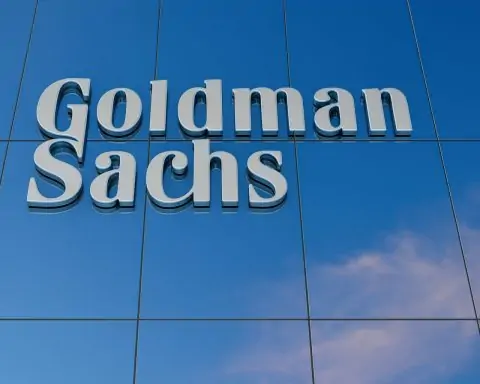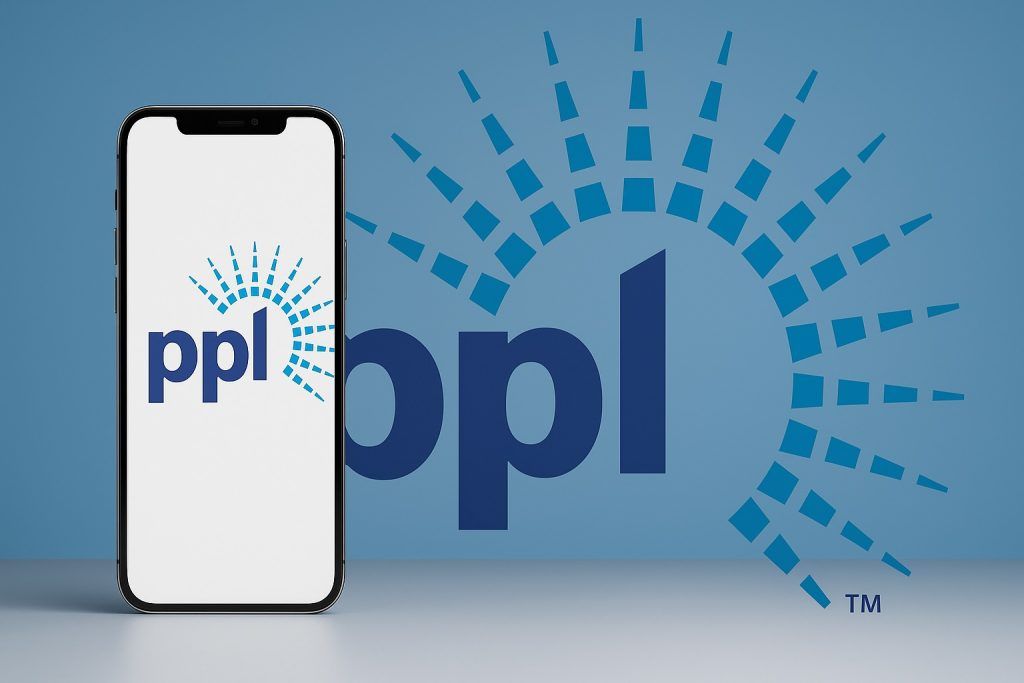- Defense Contract: US Antimony (NYSE: UAMY) secured a sole-source, five-year contract (up to $245 million) with the U.S. Defense Logistics Agency to supply antimony ingots for the national defense stockpile [1].
- Initial Order: The company reported its first delivery order under this contract – $10 million worth of antimony (315,000 lbs) – marking the start of stockpile replenishment [2].
- Recent Fundraising: In early October 2025, UAMY announced two equity placements totaling ~$51.25M (Oct 6: $26.25M; Oct 10: $25M). These were at sharply higher prices (around $10.50 per share) as demand surged [3] [4]. Combined with prior financings, UAMY has raised ~$69M in 45 days [5].
- Stock Surge: UAMY shares jumped over 50% on the news and hit a record intraday high of $13.93 on Oct 10, 2025 (closing ~$12.21) [6] [7]. This lifted its market capitalization to about $1.6 billion [8], up from under $200M a month earlier. (For context, UAMY stock was near $0.78 on Sept 23 before the DLA contract was announced [9].)
- Company Role: U.S. Antimony operates North America’s only two antimony smelters (in Montana and Mexico) and produces antimony oxide, metal and trisulfide (used in batteries, flame-retardants, munitions) – plus zeolite and precious metals [10]. Antimony is officially a “critical” mineral for U.S. national security [11], and China’s export bans have left “no current U.S. sources” of mined antimony [12] [13].
- Financials: In the first half of 2025, UAMY’s revenue surged 160% YoY to $17.53M [14]. Q1 2025 saw $7.0M in sales (up 128% YoY) generating $2.4M gross profit [15]. Management now guides roughly $50M revenue for 2025 and $100M for 2026 [16]. Analysts’ consensus 12-month price target is about $8.50 (median) [17], below current levels. (Simply Wall St. models a fair value near $7.50 [18].)
Company Background
United States Antimony Corp. is a Texas-based critical-minerals developer specializing in antimony – a silvery metal used to harden lead (e.g. bullets), produce flame-retardants and advanced battery alloys. The company was founded decades ago and today owns and operates the only two antimony smelters in North America [19]. Its Montana and Mexican facilities process raw antimony ore into oxide, metal and trisulfide for industrial and military customers, and also recover zeolite and precious metals as byproducts. U.S. Antimony’s board recently added national security expert General Jack Keane, underscoring its strategic mission [20]. In mid-2025 the company shifted its legal domicile to Texas and was listed on the NYSE American and NYSE Texas exchanges (ticker UAMY) [21].
As a vertically-integrated miner-processor, UAMY positions itself as a domestic supplier of a mineral now deemed “critical” by U.S. policy [22]. After World War II, antimony was largely produced in the U.S., but today “domestic users of antimony rely on imports” [23]. Nearly 80% of U.S. antimony has been imported from China, which historically dominated the market (over 50% of global supply even after recent declines [24] [25]). With China now restricting exports, companies like UAMY become linchpins in securing the U.S. supply chain.
Recent Developments (October 2025)
DLA Defense Stockpile Contract: The headline news came Sept. 23, 2025, when Reuters and the company announced a sole-source five-year IDIQ contract with the U.S. Defense Logistics Agency (DLA) for up to $245 million of antimony ingots [26] [27]. U.S. Antimony CEO Gary Evans hailed the deal, saying “it’s incredibly meaningful… to play such a strategic role in strengthening our nation’s defense readiness” [28]. The contract requires UAMY to supply antimony for the National Defense Stockpile (NDS), making it a major guaranteed buyer.
First Delivery Order: On Sept. 30, UAMY announced it had already received the first delivery order under that contract [29]. This initial order was ~$10 million for 315,000 lbs of metal – roughly 3% of total five-year value. Importantly, the company also provided revenue guidance of ~$50M for 2025 and ~$100M for 2026 [30], based on “certainty of future demand” from DOD. CEO Evans noted that the U.S. Forest Service had just granted all previously requested mining permits in Alaska (over 35,000 acres near Fairbanks) [31], a major regulatory milestone that should expand their ore supply. (Analysts note that no active U.S. antimony mine exists today [32] – new permits hint that could change.)
Equity Financings: In early October, UAMY accelerated fundraising to capitalize on its heightened profile. On Oct. 6 it disclosed a securities purchase agreement raising $26.25 million from an institutional investor [33]. On Oct. 10 (after market close), it announced another placement of ~2.38 million shares at $10.51 each for $25 million, led by American Capital Partners (expected to close Oct. 14) [34]. CEO Evans commented that these offers were unsolicited, allowing UAMY to raise capital at “minimal or no discounts to market” [35]. Including these deals, the company has raised nearly $70 million in under 45 days, at progressively higher prices as the stock has rallied. Proceeds are earmarked for building inventory, acquiring more ore leases (in Montana and Alaska), and expanding the Mexican smelter’s capacity [36].
Stock Movement: The combination of contract news and fundraises sent UAMY’s stock parabolic. After opening Oct. 10 at $12.00, the stock spiked to an intraday high of $13.93 (volume ~36 million) before closing $12.21 [37] – up over 12% on the day and more than 50% since Sept. 30. This topped out above the financing prices (around $10.50) and gave UAMY a market cap near $1.6 billion [38]. For context, one month prior the stock was below $1.00 and market cap <$150M. (On Sept. 26, before the DLA order, CEO Evans personally bought 100,000 shares at $6.13 each, further signaling confidence [39].)
Stock Performance & Market Data
As of the Oct. 10 close, UAMY traded around $12.20 per share. Trading volume has exploded – e.g. ~36M on Oct. 10 vs. daily averages of <1M in early Sept [40]. Over the past month, the stock is up roughly +590% (from about $1.8 in early Sept to $12+ now) [41]. Year-to-date it shows a +1480% surge, though it remains well off the mid-2024 peak (adjusted basis) and is extremely volatile.
Key stock statistics: UAMY has about 134 million fully-diluted shares outstanding (per SEC filings), giving a market cap ~$1.6–1.7B as of $12.20. Its 52-week range is ~$0.49–$13.93 [42]. The 30-day beta is very high, reflecting speculative trading. Insider ownership (founders and directors) is significant; the recent CEO share purchase further raises his stake.
Given the rapid rise, some technical analysts note that UAMY is trading well above traditional moving averages. Short interest data is scarce (UAMY is a penny/OTC name except now on NYSE), but retail interest is very high (e.g. stock with community discussion on Reddit and SeekingAlpha). No formal rating agencies cover UAMY; financial media notes it as a “momentum” play in critical minerals. Several analysts (HC Wainwright, B. Riley, D. Boral Capital) have Buy ratings but mid-single-digit price targets. Aggregated sites show median 12-month targets of ~$8.50 [43], implying potential downside from current levels. In fact, Simply Wall St. calculates a fair value of only ~$7.50, citing the need for >100% annual growth to hit 2028 projections [44]. (These models assume UAMY executes on expansions and DLA deliveries without delays.)
Financial Performance & Forecast
UAMY’s financials have turned sharply positive in 2025. In Q1 2025, revenue grew 128% year-over-year to $7.0M (from $3.1M in Q1 2024), yielding $2.4M gross profit (a 302% increase) [45]. Operating expenses were about $2.0M that quarter, so Q1 swung to a small operating income. For the first half of 2025, the company reported $17.53M revenue (160% higher than H1 2024’s $6.74M) [46]. These gains came mainly from antimony sales; costs rose by a similar percentage (152%) so gross margins are steady. Management indicated they expect to report full-year 2025 revenues near $50 million (reflecting DLA orders and other sales), and roughly $100M in 2026 [47] – roughly +100% growth each year if achieved.
Analysts caution these are ambitious goals. Simply Wall St.’s model projects ~$208M revenue by 2028 (implying ~30% CAGR post-2025), but notes current losses must be overcome by rapid scale-up [48]. So far, UAMY remains lightly profitable (or near breakeven) on the EBITDA level. The company is investing heavily in operations, so free cash flow is negative. However, the large cash infusion from equity raises (almost $70M in late 2025) has bolstered the balance sheet. As of Q2 2025, UAMY had roughly $10M cash on hand and zero debt (plus $26M incoming from a Truist line of credit contracted in April) – although a large portion is earmarked for planned capex and working capital.
In summary, fundamentals show a small but fast-growing miner. Key questions are: Can UAMY scale production to meet DLA orders? Can it secure enough ore (the Alaskan permits suggest yes)? Will costs stay controlled? Much of 2026 and beyond depends on execution and commodity prices (antimony prices have tripled this year, helping UAMY’s margins). The management’s long-term guidance (50%+ annual revenue growth) implies a high-risk, high-reward scenario.
Industry & Geopolitical Context
Antimony’s importance has surged in 2025. After decades of Chinese dominance, Beijing has used export curbs to push strategic metals deals. Reuters notes China “blocked exports” of antimony to the U.S. in 2024 [49], and maintained restrictions through 2025 [50]. This sent the price of antimony oxide more than 70% higher in 2025. U.S. officials have publicly warned of vulnerability – antimony is used in munitions (shell casings), flame retardants for electronics, and advanced battery alloys. The Pentagon has reportedly rushed to sign deals with domestic suppliers: UAMY’s $245M contract coincides with broader efforts to stockpile critical minerals.
No new U.S. antimony mine exists today – supply is imported from former USSR, Mexico and China. Reuters emphasizes “there are no current U.S. sources of the metal” [51]. However, that is changing: the Idaho “Stibnite” project (Perpetua Resources, NASDAQ: PPTA) just received final permits on Sept 19, 2025 [52] and aims to produce >35% of U.S. needs (reserves ~148 million lbs) when it opens (~2028) [53] [54]. This has drawn heavy investor interest (its stock also recently popped). Yet Stibnite is a long-term project and faces legal challenges. In the meantime, U.S. Antimony provides immediate domestic antimony processing capacity (having acquired ore or stockpiles and re-started its smelters).
Other industry trends: Russia and Tajikistan have boosted antimony output this year (price-driven), and Western companies are considering partnerships for onshore processing (Perpetua is in talks with Glencore, etc. [55]). Additionally, environmental groups pose a risk. The Nez Perce Tribe has sued to block the Idaho mine’s permits, and UAMY faces possible permitting hurdles if local opposition grows. Geopolitically, UAMY’s rise reflects a broader “reshoring” of critical minerals in Trump’s second term – evidenced also by executive orders and potential infrastructure bills.
Technical Analysis & Expert Commentary
Technically, UAMY’s chart shows a parabolic move. The 20-day moving average just crossed well above the 50-day, signaling short-term strength, but the stock is also extremely overbought (RSI well above 70). TradingView notes the price is more than 50% above all Wall Street analyst targets [56]. In plain terms, the market is pricing in nearly all good news.
Expert analysts are mixed. The consensus “Strong Buy” (per TickerNerd) reflects enthusiasm, but price targets remain modest: the highest 12-month estimates are ~$9, the lowest $5 [57]. Wainwright (Sept 26, 2025) reiterated a buy with $8.50 target. Simply Wall St warns the company needs 100%+ growth per year to justify a near-$200M valuation [58]. Yet many retail investors believe any negative news will be met with government support or buybacks.
Insider activity is notable: the CEO’s 100k-share purchase on Sept 26 [59] was seen by some as a bullish signal. Hedge funds data is unclear, but platforms like Quiver Quant show minimal short interest (likely owing to low liquidity until now). On Seeking Alpha and Yahoo Fin, users debate whether the stock is a “bubble” or a genuine value play given the scarce supply of antimony.
Risks & Outlook
Despite the excitement, several risks remain. Execution risk looms largest: UAMY must scale up mining and processing quickly. The company has leased additional land in Alaska and reopened some Montana mine workings, but developing new ore sources takes time. Permitting delays (as seen in Alaska mining reviews) or cost overruns could temper performance. A slowdown in DLA demand would also hurt – while U.S. stockpiling is a priority now, future budgets could change.
Valuation is another concern. At ~$12/share, UAMY trades at many times its book value and current earnings, pricing in perfection. Any supply glitch (e.g. shortage of smelting inputs) or decline in antimony price (if Chinese supply picks up) could trigger a correction. Conversely, the company’s expanding business (zeolite mining, tungsten properties in Canada, etc.) provides some diversification.
Conclusion
United States Antimony (UAMY) is at the center of a hot “critical minerals” theme. In October 2025 it became Wall Street’s poster child: a sub-$1 penny stock turned billion-dollar market cap in weeks, driven by Pentagon contracts and capital raises. This report highlights all major recent developments: the $245M stockpile contract [60], the $10M first order [61], massive equity raises [62] [63], and the resulting stock surge [64] [65].
Fundamentally, UAMY plays a unique role as a domestic antimony processor – the only company currently positioned to meet U.S. military needs for this metal. Its strategy and timing benefit from geopolitics (China bans, U.S. stockpiling [66]) and new mining permits. Yet turning these opportunities into profits requires flawless execution. Experts note that current targets ($5–$9) are well below the rally peak [67], implying risk if any optimism fades.
In short, UAMY’s upside depends on continuing strong demand and flawless growth. Its share price now reflects sky-high expectations. Investors should weigh the strategic positives – including rare government-backed contracts and fast-rising revenues [68] [69] – against the dangers of a speculative blow-off. For readers considering this stock, note that even a modest pullback could be significant. All developments should be monitored closely, as UAMY remains a volatile, news-driven microcap. [70] [71]
Sources: Recent company press releases [72] [73], Reuters news [74] [75], industry reports [76] [77], and financial media (Mining.com, Simply Wall St, Yahoo Finance) [78] [79]. All quoted material is sourced accordingly.
References
1. www.reuters.com, 2. www.reddit.com, 3. www.usantimony.com, 4. www.usantimony.com, 5. www.mining.com, 6. www.mining.com, 7. ca.investing.com, 8. www.mining.com, 9. www.ainvest.com, 10. www.mining.com, 11. www.usitc.gov, 12. www.reuters.com, 13. ts2.tech, 14. www.usantimony.com, 15. www.usantimony.com, 16. www.reddit.com, 17. tickernerd.com, 18. simplywall.st, 19. www.mining.com, 20. www.usantimony.com, 21. www.usantimony.com, 22. www.usitc.gov, 23. www.usitc.gov, 24. www.usitc.gov, 25. www.usitc.gov, 26. www.reuters.com, 27. www.usantimony.com, 28. www.reuters.com, 29. www.reddit.com, 30. www.reddit.com, 31. www.reddit.com, 32. www.reuters.com, 33. www.usantimony.com, 34. www.mining.com, 35. www.mining.com, 36. www.mining.com, 37. ca.investing.com, 38. www.mining.com, 39. www.ainvest.com, 40. ca.investing.com, 41. tickernerd.com, 42. tickernerd.com, 43. tickernerd.com, 44. simplywall.st, 45. www.usantimony.com, 46. www.usantimony.com, 47. www.reddit.com, 48. simplywall.st, 49. www.reuters.com, 50. ts2.tech, 51. www.reuters.com, 52. www.reuters.com, 53. www.reuters.com, 54. ts2.tech, 55. ts2.tech, 56. tickernerd.com, 57. tickernerd.com, 58. simplywall.st, 59. www.ainvest.com, 60. www.reuters.com, 61. www.reddit.com, 62. www.usantimony.com, 63. www.usantimony.com, 64. www.mining.com, 65. ca.investing.com, 66. ts2.tech, 67. tickernerd.com, 68. www.reddit.com, 69. www.usantimony.com, 70. www.reuters.com, 71. www.reddit.com, 72. www.usantimony.com, 73. www.usantimony.com, 74. www.reuters.com, 75. www.reuters.com, 76. www.usitc.gov, 77. ts2.tech, 78. www.mining.com, 79. simplywall.st








